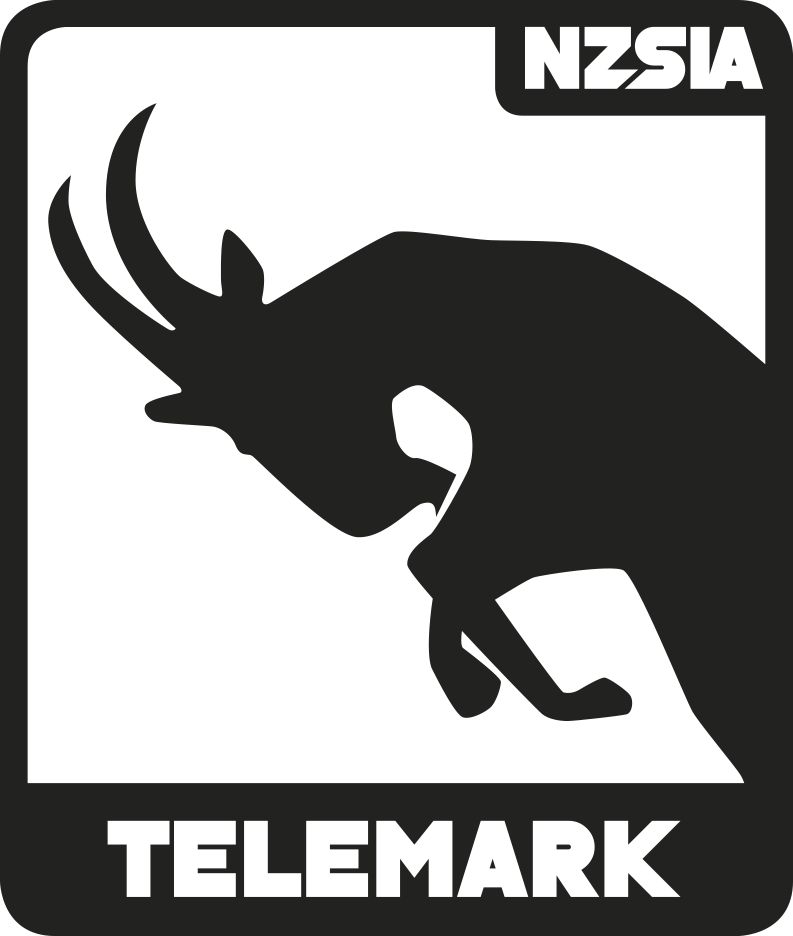Here, the focus is on the four fundamental movements of telemark skiing: fore/aft, rotational, lateral, and vertical movements. These movements are crucial for maintaining control and balance while skiing and are applied through the base of support and centre of gravity. The section provides detailed guidance on how each movement contributes to the overall telemark turn, including techniques for effective lead change and maintaining stability. Additionally, it covers how these movements work together to improve skill progression and adapt to different terrain and snow conditions.
![]()
Movement Descriptors
Understanding the four fundamental movements of Telemark skiing is essential, but equally important is using consistent terminology to describe how these movements are applied. Movements in Telemark skiing do not function independently—they are always blended together. From the beginner level onward, coordinating these movements effectively is key to skill progression. As soon as a Tele-skier can turn, all four movements are present in some form. Refining their coordination allows skiers to adapt to the forces created by terrain, speed, turn shape, snow conditions, and equipment.
To accurately describe how movements influence skier performance and ski/snow interaction—whether executing a telemark turn on groomed terrain or navigating variable snow—we use five movement descriptors. These descriptors apply to both the skier’s body movements and the ski’s performance on the snow.
Duration
Duration is the length of time a movement is sustained.
- Application: Skiers must determine how long to maintain a movement based on the situation.
- Example: In a telemark turn, the duration of lead change effects turn shape. A gradual, extended lead change results in a smoother, more controlled transition, whereas a shorter duration leads to quicker edge engagement.

Intensity
Intensity is the amount of force or muscular engagement applied to a movement.
- Application: Higher intensity results in stronger movement application, influencing turn characteristics and ski performance.
- Example: In a steep telemark descent, a skier may apply greater intensity in their lateral movement (angulation) to maintain edge grip, while a lower intensity may be used for a more relaxed stance on moderate terrain.

Rate
Rate is the speed at which a movement is applied.
- Application: Adjusting the rate of movement helps skiers adapt to different turn shapes and terrain demands.
- Example: In short-radius telemark turns, the skier must increase the rate of rotational movement to make turns more quickly, whereas a slower rate is used for long-radius turns.
Range
Range is the amount or degree of movement applied.
- Application: Choosing the correct range ensures precision, balance, and effective control over turn shape.
- Example: As telemark skiers become more dynamic, the range of their lateral movement increases, allowing greater inclination and edge angle for higher performance turns.

Timing
Timing is when a movement is applied within the turn cycle.
- Application: Well-timed movements enhance rhythm, balance, and overall control.
- Example: In moguls, experienced telemark skiers may adjust their timing by flexing during turn transitions (retraction turns) rather than extending, allowing for smoother absorption of terrain changes.
By understanding and applying these movement descriptors, telemark skiers can refine their technique, adapt to varying conditions, and enhance their overall skiing performance.

